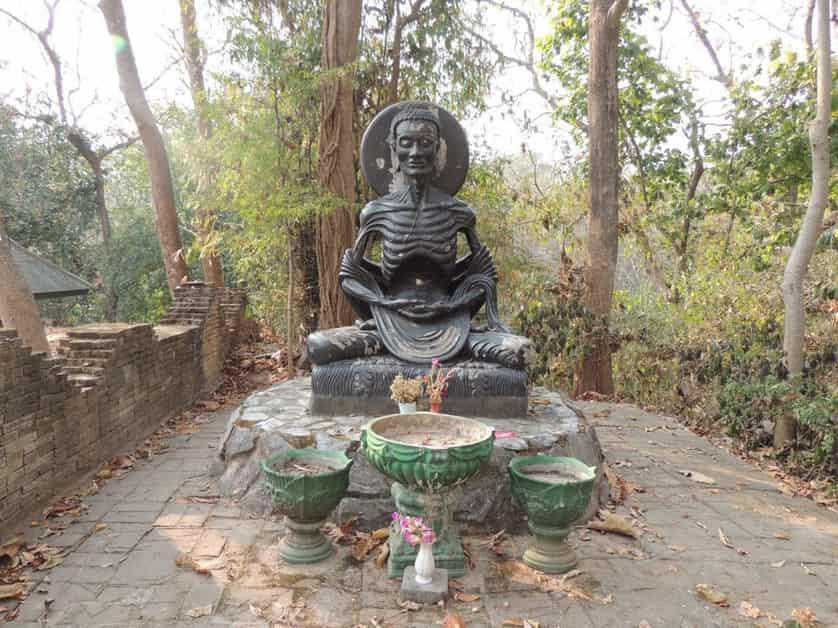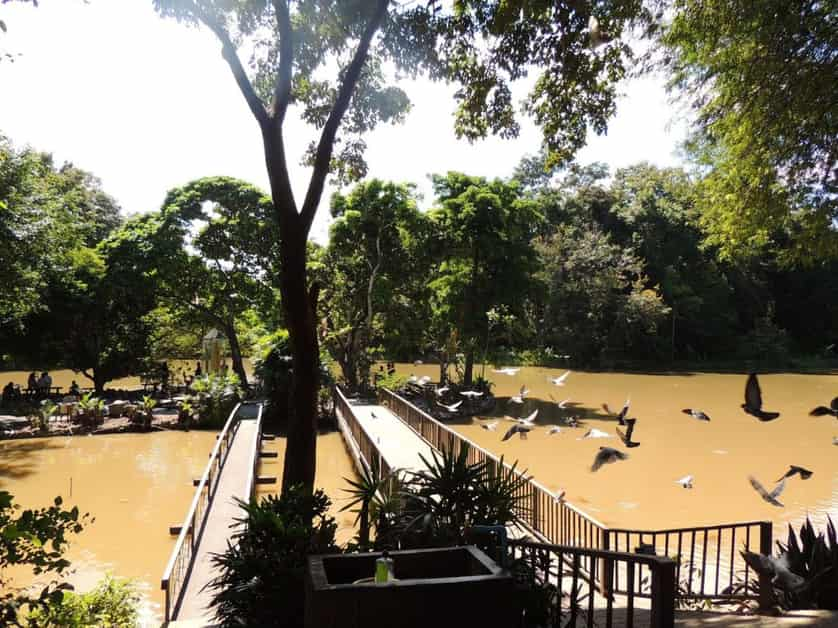“You from England! You like football? I love Arsène Wenger!” exclaimed an excitable saffron-robed monk with an irremovable, infectious smile on his face. 700-year-old ‘Wat Umong’, hidden inside Chiang Mai’s vast jungle, was different to the more well-known, crowded Buddhist temples deeper in the city. A narrow path had been formed through the towering trees, each trunk supporting a sign on which chipping white paint displayed some quotes, “Nothing is permanent”, “Light dispels darkness, wisdom dispels ignorance” “Clean, clear, calm. These are the characteristics of a noble person”. I came to a clearing, where three tunnels were presented to me. A line of shoes suggested that the middle tunnel, wider than the others, was the most popular choice. After escaping the 40 degree heat into the stone-walled haven of cool air, I immediately understood why Thai monks wanted to build a temple underground, 700 years previously. Inlets in the worn-out reddish brickwork revealed aging Buddha sculptures dimly lit by candlelight. I observed two types of people in the tunnel – one, the tourist, posing for photos with a selfie-stick, and the other, the Buddhist, sat praying in front of the Buddha statue, seemingly unfazed by the continual camera clicks – which were accentuated by the otherwise silent atmosphere. Praying is a way of making merit for Thais, to bring happiness to their next life, and more importantly this current life. This is one of the many ancient Buddhist traditions that exists in harmony with the modern way of life in Thailand. Upon exiting the tunnels, I discovered Wat Umong’s monumental ‘chedi’, otherwise known as a stupa, which is a mound-like tower containing Buddhist relics, potentially of deceased monks. Normally, Thai Buddhist chedis are plated with gold leaf, but this eroded grey stupa was reflective of its age. After circumambulating the tower I stumbled upon a captivating Buddha statue, which reminded be of a story I’d heard many years previously.

The emancipated figure represents Siddartha Gautama, the Buddha, before he attained enlightenment. Whilst roaming northern India, searching for the answer to happiness, Siddartha practised asceticism. He fasted until the brink of death, at which point he realised that starvation was not the way to enlightenment. This experience lead Siddartha to realise the power of practising the ‘Middle Way’, which is avoiding extreme habits – such as starvation or gluttony – and practising temperance. The boney statue was a hard-hitting reminder of this valuable teaching, shared by all schools of Buddhism. What sets Wat Umong apart from the other temples around Chiang Mai is its spectacular surroundings. Alongside the path, red vines caught my eye as they caught the sunlight, softly swinging in the hot breeze. The path lead me to a lake enveloped by greenery, whereby two wooden bridges connected me to a small island in the centre. A little boy threw food off the bridge to greedy catfish, which jumped so far out the water I thought he might catch one. On the other side of the island, circles were emerging on the surface of the water, rippling outwards. I crouched down to get a closer look, and saw the face of a tiny turtle coming up for air. Little turtle mouths popped up every few seconds, all around the lake. What an ideal place for a rest on a shaded marble bench, I thought, until my moment with nature was rudely interrupted by a bird pooing on my iPhone screen. I’d been too busy looking at the turtles to realise that there wasn’t an inch of tree branch above me unoccupied by a pigeon. It was time to go.

Midday in ‘hot season’ may not be the most ideal time to visit Wat Umong, but saying that, it’s always hot in Chiang Mai. Luckily, there are many spots around the temple to rejuvenate in the shade with a thirst-quenching Italian soda. There are also many ridiculously cute temple dogs, which are well looked after by the monks, whose living quarters are dotted about the surrounding forest. The monks are friendly, and offer meditation classes at the temple. Wat Umong is a place I have been drawn to revisiting again and again, because there is really no other temple in Chiang Mai, or maybe even Thailand, that compares to it. By Leah Molesworth
